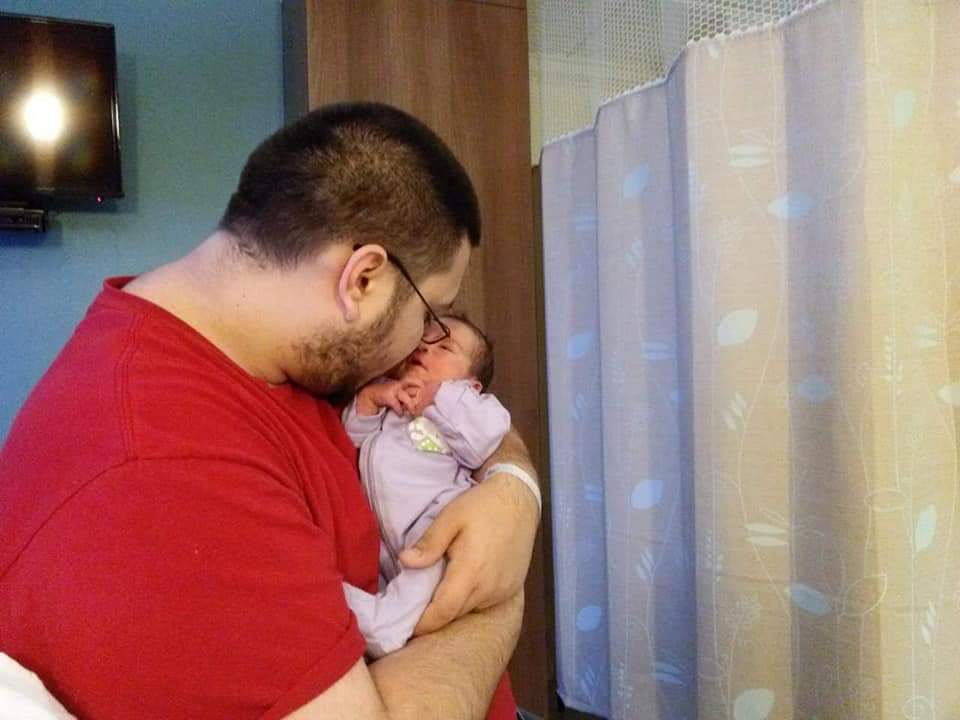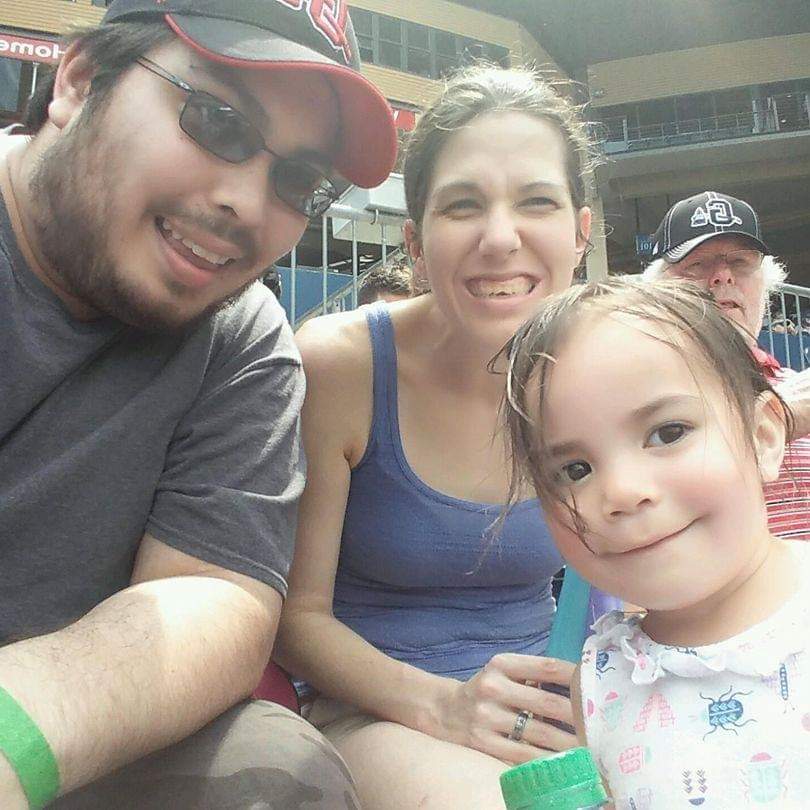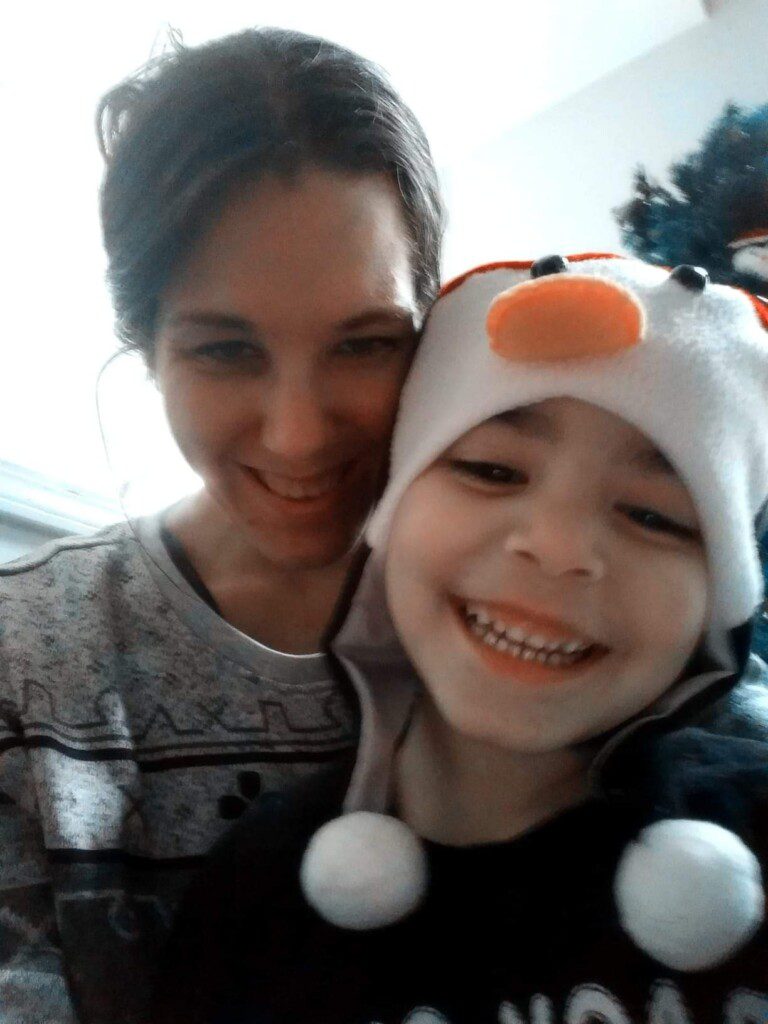Written by Kelly Clendenning for the RSDSA blog.
How and when did you develop CRPS/RSD?
The how is hard to determine as my first mini stroke and seizure happened in 2007 when I was 20 years old. At the time, the pain started in my spine. 12 years later, it is now in my entire right side, face, chest, and left hand. At this juncture, we do not know what caused it, but it is possible the TIA (transient ischemic attack) and seizure triggered it. I was diagnosed in 2015 after seven years of trying to get a diagnosis and treatment and well over 50 various doctors. My daughter was seven months old.
What has daily life been like since your diagnosis?
After so long, what should be abnormal is no longer strange. In the morning, I wake up and determine if I need my cane or not. I take my medicines and get my daughter ready for school if it is a weekday. Compartmentalizing pain and keeping my face blank is no longer a conscious thought as I see friends, family, and stranger alike as I give my daughter a final kiss before going home to work.
I cannot work out of my home anymore. In fact, I cannot exercise anymore due to the risks it poses to my body. I determine after work what I can do based on the amount of pain I am in. Sometimes I can manage to do dinner and two chores, but most often it is one with frequent rests.
Sleep is fractious. In fact I can count on one hand the times I have had an uninterrupted night of sleep in 12 years. A sleep study done while undiagnosed reveals I wake up every nine mins. While pain management has helped this to where I may get two to four hrs of straight sleep, it is nothing like before.
 Every day is a determination of what can I do. What priority is there I must meet. With a young daughter and husband, as well as a job, you can imagine that my own rest is one I usually push to the side as much as my body allows…. despite my husband’s wishes otherwise.
Every day is a determination of what can I do. What priority is there I must meet. With a young daughter and husband, as well as a job, you can imagine that my own rest is one I usually push to the side as much as my body allows…. despite my husband’s wishes otherwise.
What is one thing you wish those without CRPS/RSD could understand?
We, especially those of us who have had it for years, physiologically will not express intense pain the same way you will. Our bodies have protected itself so that it does not literally break with the stress. Our blood pressure may not go up, we may not cry or tear up, we may not sweat or only sweat on our affected limbs, and we are very, very sick.
We need allies. One in ten doctors or medical professionals I have met over the years even knows what it is… and therefore we have very few who believe us. Stand by us. Because this illness may not seem as dangerous as cancer, but it can be just as fatal.
What advice would you give to newly diagnosed Warriors?
Do not take the long view right away. For many of us, we will not stay in remission so it can be easy to think “what happens in 30 years?,” focus on today. Let it be enough.
Do not beat yourself up when you cannot do things you think you should. Accept help.
Do not give up. Do not stop fighting for treatment or to be heard.
Most important? You are never, ever alone.
What advice would you give to Warriors who have had CRPS/RSD for many years?
Remember that this illness can flare up or outwit or outdo even the best of coping tools and treatments. Do not be afraid to cry to a friend and don’t be afraid to talk your doctor if it is time to do something new. And as a reminder, while this may be so rare, we are not alone. We are not alone in this illness or the chronic pain and illness community.
What activities or treatments have helped you find temporary or long term relief?
Treatments are currently an all around approach from herbal like non-THC CBD oil to pharmaceutical-like fentanyl and gabapentin to spiritual like prayer and a relationship with God.
For me, I also find playing video games, reading, playing piano, writing, and other distraction activities during a flare are helpful when I have the energy.
I imagine my toolbox of what works will change and keep changing as time goes on.
What else would you like to add?
This illness is extremely isolating because of its lack of knowledge in the medical community to its misunderstood severity among layperson.
If we are going to really find hope, we need go start with gaining allies who are ot afraid to help those of us with this. We need allies in neurology, rheumatology, emergency care when pain hits a 10 and medicine is not working, therapists skilled in mental health with acute chronic pain involved, physical therapists, pain management, dentists, anesthesiologists, research, pharma and natural medicine, nutrition, spiritual leaders, and more. We are dying because the help is too few or non-existent. If you are an able-bodied person, then please consider this a call to action. Educate yourself and for the love of the sick, help us.
If you have been undiagnosed and still are not getting answers, do not give up. I went to over 50 specialists including an Emory teaching hospital in Atlanta (which was by far the worst experience), and well over 30 other types of professionals in seven years. I was having three to six appointments a week at one point for tests and telling doctors that I was not making it up at 20 years of age.
Do not let them tell you it is not real or is not as strong in pain as you say it is. Do not be afraid to talk to someone else, educate yourself and above all advocate for yourself. Get family and friends involved. Get that answers and fight like the pain warrior you are.
Please consider making a donation to RSDSA today!
